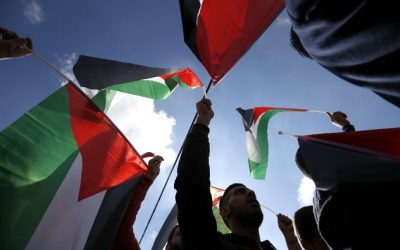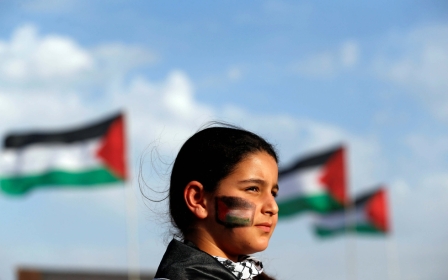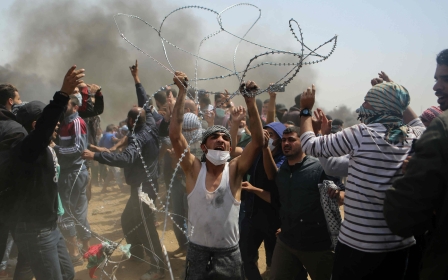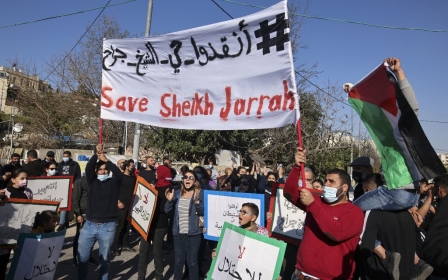Land day: Israel's programme of Palestinian land theft goes on undisturbed
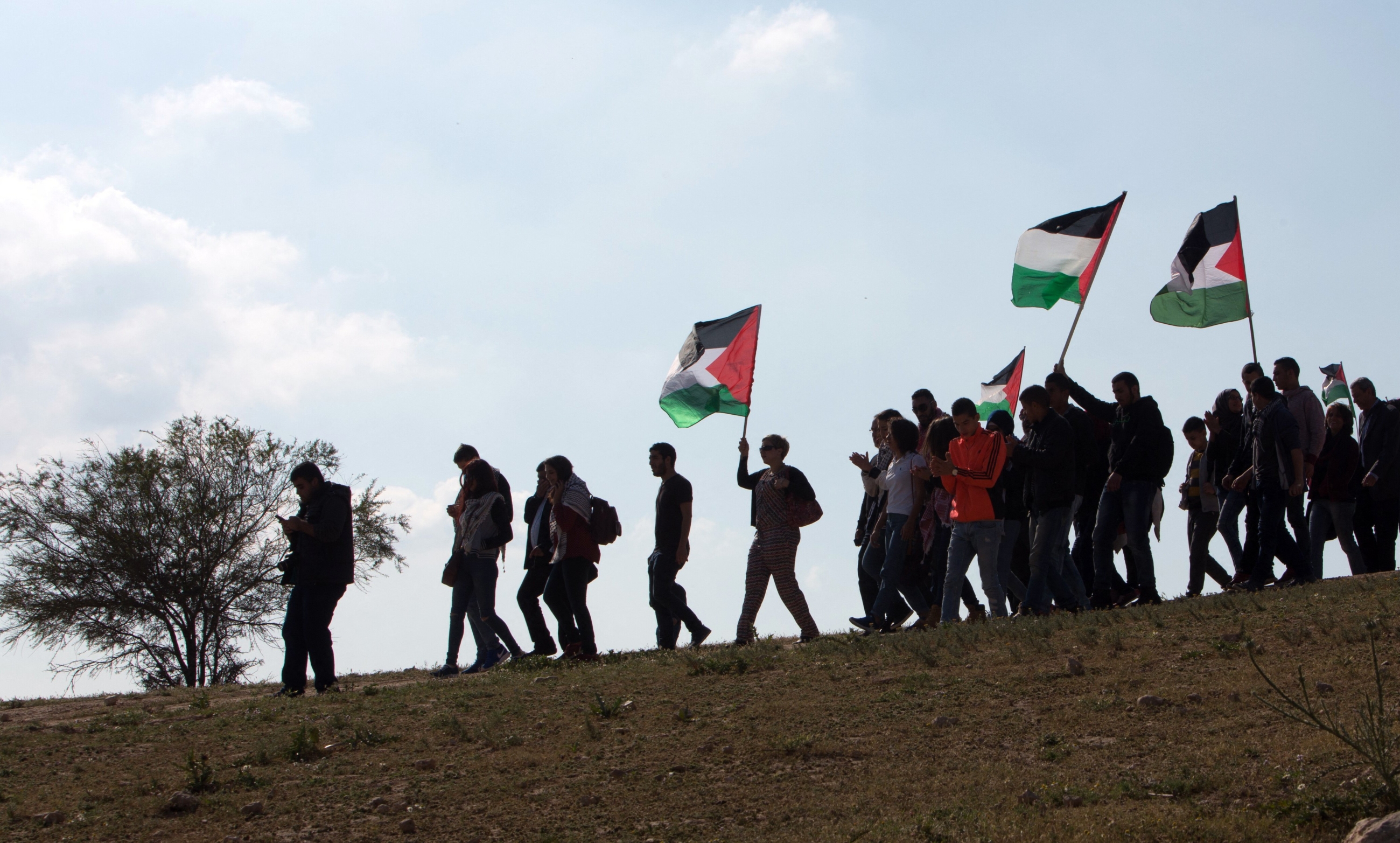
The centrality of the struggle for land has always been fundamental to understanding the Israeli-Palestinian conflict.
It is at the heart of two major events whose anniversaries fall due on 30 March. The first, Land Day, commemorates the surge of Palestinian resistance to the takeover of their land by Israel in 1976; and the second marks the start of the Great March of Return in 2018, when thousands of Palestinians in Gaza demonstrated for the right of refugees to return to their confiscated lands in Israel.
From the start the Zionist movement was predicated on the acquisition of an empty territory on which to establish a state exclusively for Jews. Since no such land was available in the Palestine of the time, it had to be carved out, first by purchase, and later by war.
The land-grabbing journey
As Jewish immigrants began to arrive in the country in increasing numbers after 1917, Zionist organisations such as the Jewish National Fund and the Palestine Jewish Colonisation Association set about buying Palestinian land, provided it was untenanted at the time of purchase.
Today, Israel's settlements have meant that Palestinian ownership of West Bank and East Jerusalem land has shrunk to under 13 percent
Many Arab landowners living outside Palestine, in addition to a minority of Palestinian peasants, sold them land. These sales were mainly motivated by economic necessity, since the Zionist organisations had access to foreign funds unavailable to Arabs.
Years of intense Zionist effort, however, yielded disappointing results. By 1947, and despite their funding and connections to powerful supporters of Zionism, these organisations had acquired no more than a meagre 6.7 percent of Palestine's land.
But this disappointment was soon reversed by the Arab-Israeli war of 1948. In that war Israel captured 78 percent of Mandate Palestine, taking large swathes of Palestinian land, mostly untenanted thanks to population flight and expulsions in the war.
After 1948 the new Israeli state swiftly enacted a series of laws designed to acquire more Palestinian land by pseudo-legal means. These included the 1950 Absentee Property Law, permitting the state to take over Palestinian land and property in their owners' absence; and soon after, the 1953 Land Acquisition Law, which introduced a new category of "state lands" and "closed areas".
This had the effect of making the state the majority owner of the land, which was to be permanently out of the reach of its previous Palestinian owners.
Subsequent events up to and including the 1967 Arab-Israeli war, that put Israel in occupation of the rest of Palestine, have been stages on the same land-grabbing journey. Today, Israel's settlements have meant that Palestinian ownership of West Bank and East Jerusalem land has shrunk to under 13 percent. That is set to diminish further as the settlement process continues with further land loss.
This is the background to the dramatic protests of Land Day in 1976. Their trigger at the time was the Israeli government's plan to expropriate thousands of dunums of Arab land in the Galilee to build Jewish industrial villages. In line with the Israeli government's 1975 "Galilee Development Plan" to expand Jewish settlement, it would accelerate Judaisation of what was a majority Arab area.
A turning point
On 30 March a general strike was called, and widespread demonstrations in Arab towns erupted from the Galilee to the Negev. Thousands marched in protest, while solidarity demonstration were held in the Occupied Territories and the Palestinian refugee camps in Lebanon.
Unexpected at the time from what had been a largely quiescent Arab population, Israel was alarmed and deployed thousands of police, army units and tanks to quell the protests. Six Arabs were killed, hundreds wounded, and hundreds more arrested.
Land Day, as it became known, was a turning point. It was the first time since 1948 that the Arabs in Israel acted as a national collective, refusing to accept the theft of their land after years of control by Israel's military rule. Land Day was an expression of national pride and self-confidence. It marked the assertion of an Arab presence that Israel's politics could no longer ignore, and the starting point for Arab political participation in Israel.
From that time to this, Land Day has been commemorated annually by Palestinians everywhere. In 2018 it was marked by the start of another great Palestinian protest over land. The Great March of Return saw 30,000 Palestinians in Gaza demonstrate near the Israeli separation fence of electrified barbed wire and sensors. It was a peaceful protest, demanding the right of refugees to return to their lands and an end to the blockade of Gaza. Intended to last from 30 March to 15 May, Nakba Day, the same protests took place every Friday.
A double heroism
As in 1976 Israel retaliated with murderous violence. Between 30 March and 15 May 2018 an estimated 110 protesters were killed, and 13,000 wounded by a combination of sniper fire and drones. By the time the March of Return was halted by Hamas in December 2019, 214 people had been killed, and 36,000 wounded. Of these, 1,200 needed long term rehabilitation following bone infections and limb injuries. Israeli soldiers seemed to be using a "shoot-and-maim" policy, deliberately targeting the legs of protestors to cause maximum disability.
Land Day marked the assertion of an Arab presence that Israel's politics could no longer ignore
Gaza's health system, damaged by years of blockade, understaffing, and equipment and power shortages, has been unable to cope with the toll of so many injured. Yet that did not stop Palestinian youth braving death and injury each week for nearly two years, and creating a new Palestinian legend to commemorate on 30 March.
Israel never changed course in the face of that double Palestinian heroism celebrated on Land Day. It went on to build "Development towns" for Jews, 26 by 1981, with the effect of altering the Galilee's demography in favour of Jews.
In Gaza, likewise, the blockade continues, and Israel's pretext of its brutality as self-defence against the Great March of Return has been accepted by many Western governments. Its programme of Palestinian land theft goes on undisturbed.
But for Palestinians on 30 March, Land Day continues to be an inspiration, and a tribute to the just struggle of an unbowed people for their land.
The views expressed in this article belong to the author and do not necessarily reflect the editorial policy of Middle East Eye.
Middle East Eye propose une couverture et une analyse indépendantes et incomparables du Moyen-Orient, de l’Afrique du Nord et d’autres régions du monde. Pour en savoir plus sur la reprise de ce contenu et les frais qui s’appliquent, veuillez remplir ce formulaire [en anglais]. Pour en savoir plus sur MEE, cliquez ici [en anglais].




